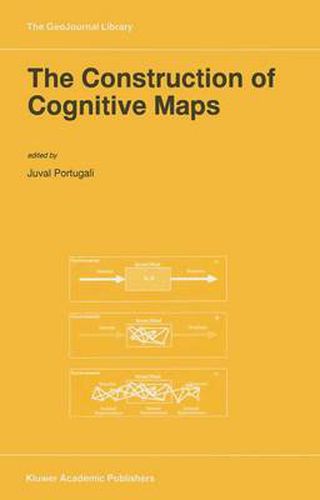Readings Newsletter
Become a Readings Member to make your shopping experience even easier.
Sign in or sign up for free!
You’re not far away from qualifying for FREE standard shipping within Australia
You’ve qualified for FREE standard shipping within Australia
The cart is loading…






This title is printed to order. This book may have been self-published. If so, we cannot guarantee the quality of the content. In the main most books will have gone through the editing process however some may not. We therefore suggest that you be aware of this before ordering this book. If in doubt check either the author or publisher’s details as we are unable to accept any returns unless they are faulty. Please contact us if you have any questions.
This work aims to offer insights on processes associated with the construction of cognitive maps - that is to say, with the construction of internal representations of very large spatial entities such as towns, cities, neighbourhoods, landscapes, metropolitan areas, environments and the like. Because of their size, such entities can never be seen in their entirety, and consequently one constructs their internal representation by means of visual, as well as non-visual, modes of sensation and information - text, auditory, haptic and olfactory means for example - or by inference. Intersensory co-ordination and information transfer thus play a crucial role in the construction of cognitive maps. Because it involves a multiplicity of sensational and informational modes, the issue of cognitive maps does not fall into any single traditional cognitive field, but rather into, and often in between, several of them. Thus, although one is dealing here with processes associated with almost every aspect of our daily life, the subject has received relatively marginal scientific attention. The book is directed at researchers and students of cognitive mapping and environmental cognition. In particular it focuses on the cognitive processes by which one form of information, say haptic, is being transformed into another, say a visual image, and by which multiple forms of information participate in constructing cognitive maps.
$9.00 standard shipping within Australia
FREE standard shipping within Australia for orders over $100.00
Express & International shipping calculated at checkout
This title is printed to order. This book may have been self-published. If so, we cannot guarantee the quality of the content. In the main most books will have gone through the editing process however some may not. We therefore suggest that you be aware of this before ordering this book. If in doubt check either the author or publisher’s details as we are unable to accept any returns unless they are faulty. Please contact us if you have any questions.
This work aims to offer insights on processes associated with the construction of cognitive maps - that is to say, with the construction of internal representations of very large spatial entities such as towns, cities, neighbourhoods, landscapes, metropolitan areas, environments and the like. Because of their size, such entities can never be seen in their entirety, and consequently one constructs their internal representation by means of visual, as well as non-visual, modes of sensation and information - text, auditory, haptic and olfactory means for example - or by inference. Intersensory co-ordination and information transfer thus play a crucial role in the construction of cognitive maps. Because it involves a multiplicity of sensational and informational modes, the issue of cognitive maps does not fall into any single traditional cognitive field, but rather into, and often in between, several of them. Thus, although one is dealing here with processes associated with almost every aspect of our daily life, the subject has received relatively marginal scientific attention. The book is directed at researchers and students of cognitive mapping and environmental cognition. In particular it focuses on the cognitive processes by which one form of information, say haptic, is being transformed into another, say a visual image, and by which multiple forms of information participate in constructing cognitive maps.